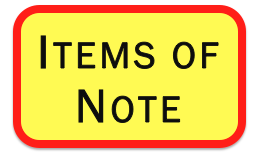Earlier this year, the Organization for Economic Cooperation Development (OECD) adopted a Recommendation on Public Procurement (Recommendation) as “a 21st-century reference” for modernizing procurement systems by all levels of government and state-owned enterprises. The Recommendation covers the entire procurement cycle "while integrating public procurement with other elements of strategic governance such as budgeting, financial management and additional forms of services delivery”. The 12 principles of the Recommendation and key elements in their implementation are summarized in this post.
The Recommendation builds on the principles of the OECD's 2008 Recommendation on Enhancing Integrity in Public Procurement and expands them to "reflect the critical role governance of public procurement must play in achieving efficiency and advancing public policy objectives". In its 2015 document, the OECD recommends that governments:
- Ensure adequate transparency in all stages of the procurement cycle by allowing free access, through an online portal, to procurement information, while taking into account legitimate needs for protection of trade secrets and proprietary information.
- Preserve the integrity of the public procurement system through general standards and procurement-specific safeguards by requiring high standards of integrity for all stakeholders and developing integrity training programs for the procurement workforce and requirements for internal controls, compliance measures and anti-corruption programs for suppliers.
- Facilitate access to procurement opportunities for potential competitors of all sizes by maintaining coherent and stable institutional, legal and regulatory frameworks, using competitive tendering with limited use of exceptions and single-source tendering and providing tender documentation that is clear and encourages broad participation.
- Balance any use of the public procurement system to pursue secondary policy objectives against the primary procurement objective by assessing the effectiveness of using procurement to achieve secondary policy objectives.
- Foster transparent and effective stakeholder participation by developing and following a standard process when formulating changes to the public procurement system.
- Develop processes to drive efficiency throughout the public procurement cycle in satisfying the needs of the government and its citizens by streamlining the public procurement system and its institutional frameworks, developing and using tools to improve procurement procedures, reduce duplication and achieve greater value for money.
- Improve the public procurement system by using digital technologies to support e-procurement innovation throughout the procurement cycle by employing digital technology that allows integrated e-procurement solutions and pursuing state-of-the-art e-procurement tools that are flexible, scalable and secure.
- Develop a procurement workforce with the capacity to deliver value for money efficiently and effectively by ensuring that procurement officials meet high professional standards, providing competitive and merit-based career options for officials and promoting collaborative approaches with universities, think tanks or policy centers to improve their skills.
- Improve performance through evaluation of the effectiveness of the public procurement system from individual procurements to the system as a whole, at all levels of government, by assessing periodically the results of the procurement process and developing indicators to measure the performance, effectiveness and savings of the procurement system.
- Integrate risk management strategies for mapping, detection and mitigation throughout the procurement cycle by developing risk assessment tools to identify and address threats to the proper function of the procurement system and publicize risk management strategies.
- Apply oversight and control mechanisms to support accountability throughout the procurement cycle, including appropriate complaint and sanctions processes, by establishing clear lines for oversight, developing a system of effective and enforceable sanctions, handling complaints in a fair, timely and transparent manner and ensuring that sufficient resources are provided for internal and external controls and audits.
- Support integration of public procurement into overall public finance management, budgeting and services delivery processes by seeking as much consistency as possible among the frameworks and institutions that govern public services delivery, including for public works, public-private partnerships and concessions.


